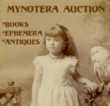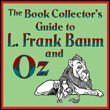|
|
|


|
|

|
Making "Non-Books
Work For You
by Craig Stark
#119, 21 April 2008
|
I've never kept track of this, but I'd estimate that, over the years, about 25% of my eBay sales (and some of my best sales period) have consisted of things that sort of resemble books or are similarly sized or something but aren't books at all - to name a few, letters, photographs and postcards, not to mention VHS tapes and CDs.
Four or five years ago I purchased a large collection of books and ephemera from the estate of a noted criminologist. Among this collection were 100s of photographs he'd taken during the research phase of several books he later published - for example, photos of drug paraphernalia, heroin dens, addicts, and so on. You can imagine the potential for marketing these to collectors, and did I ever do just that. To this day I'm still making money on this purchase. Which is a lesson in itself. Make one good purchase, and you can reap benefits for months, sometimes years.
Anyway, the negatives for these photos were also in this collection, and, not knowing what to do with them, I set them aside until I could figure something out. Occasionally, a buyer would ask if the negative to a photo I'd listed was available, and I usually obliged by including it in the sale. Other than that, they sat in a box.
Fast forward to this year. I purchased another large collection of books and ephemera from another estate, and while I was getting ready to leave, the son of the deceased mother came out with three large boxes of color slides - thousands of them - that the mother had taken on a years-long sabbatical to study Japanese weaving in the late 1970s and early 1980s and asked me if I wanted them. It was clear that these weren't ordinary photographs; they'd been carefully taken to illustrate many ancient techniques (some of which were in danger of being forgotten) that had produced some truly remarkable fabrics. I later learned that the mother had used some of these slides in her workshop presentations. Actual photographic prints, of course, would've been preferred, but by now I'd figured out how to market/present both positive film (slides) and negative film (negatives), and so the answer was, absolutely, I wanted them.
There are three approaches you can take here. One, you can simply sell the negatives or slides as is. Even if your buyer doesn't have the capability of converting them into more useful prints or image files, there are numerous vendors online and off who will do this for a relatively nominal fee. Two, you can print the images and sell them - with full disclosure, of course, that they aren't originals. Or three, you can burn the images on a CD. If the photos are of an intensely collectible nature, making prints will likely be the most profitable approach, as long as you wait a decent interval between marketing your sets and also have the patience to add a step and the expense of printing to the process. If you start with prints, you can certainly scan the prints and make additional copies of them as well, but in my experience, quality suffers.
|
|







|
|












|


